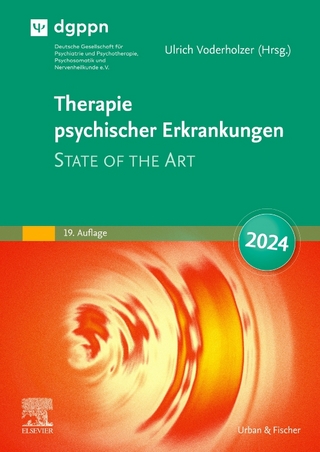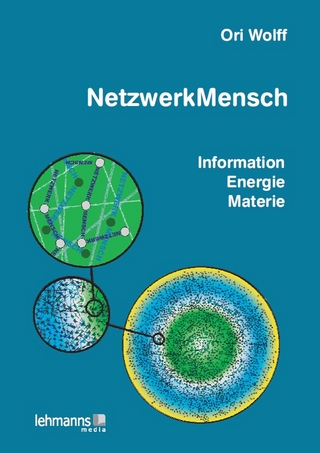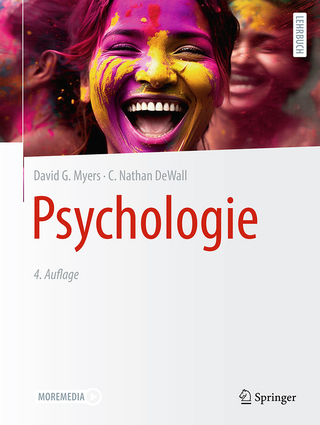
Trauma-Informed Approaches to Eating Disorders
Springer Publishing Co Inc (Verlag)
978-0-8261-4797-4 (ISBN)
This hands-on clinical guide delivers a trauma-informed phase model that promotes effective treatment for individuals with all forms of eating disorders. The second edition includes the addition of new chapters addressing the impact of a variety of contemporary issues—such as racism, LGBTQIA+ bias, COVID-19, and neurodiversity—on eating disorders as well as the treatment of eating disorders and trauma on children and teens. Case studies are also included throughout the text to illustrate these issues among all types of clients with eating disorders.
Underscoring its effectiveness, the book describes in depth a four-phase treatment model encompassing team coordination, case formulation, and a trauma-informed, dissociation- and attachment-sensitive approach to treating eating disorders. Authored and edited by noted specialists in eating and other behavioral health disorders, the text examines these maladies from neurological, medical, nutritional, and psychological perspectives. Dedicated chapters address each treatment phase from a variety of orientations, ranging from Eye Movement Desensitization and Reprocessing (EMDR) and Cognitive Behavioral Therapy (CBT) to body-centered and creative therapies. Recognizing the potential pitfalls and traps of treatment and recovery, it also includes abundant psychoeducational tools for the client. Purchase includes online access via most mobile devices or computers.
New to the Second Edition:
Delivers updated content throughout the text and new chapters addressing the impact of racism, LGBTQIA+ bias, COVID-19, and neurodiversity on eating disorders
Presents an EMDR-ED protocol as an innovative approach for treating eating disorders
New chapter on the presence and treatment of eating disorders and trauma among children and teens
Key Features:
Provides an understanding of eating disorders from neurological, medical, nutritional, and psychological perspectives
Maps out a proven, trauma-informed, four-phase model for approaching trauma treatment in general and eating disorders specifically
Illuminates the approach from the perspectives of EMDR therapy, ego state therapy, somatosensory therapy, trauma-focused CBT, and many others
Provides abundant psychoeducational tools for the client to deal with triggers and setbacks
Offers the knowledge and expertise of over 25 international researchers, medical professionals, and clinicians
Andrew Seubert, NCC, LMHC, is the cofounder of ClearPath Healing Arts Center in Corning and Burdett, New York. A licensed psychotherapist for 40 years, he has an extensive background in existential-Gestalt Therapy and in music therapy, and provides eye movement desensitization and reprocessing (EMDR) consultation and training for clinicians. Andrew specializes in working with trauma, posttraumatic stress, eating disorders, and the integration of spirituality and psychotherapy. Pam Virdi, MEd, RMN, CPN, is an accredited EMDR consultant, integrative psychotherapist, lecturer, and supervisor who now works full-time in private practice with adults, couples, and young people in Birmingham, UK. She specializes in the treatment of eating disorders, complex trauma, and posttraumatic stress disorder (PTSD). She is an accredited member of The British Association for Counselling and Psychotherapy and EMDR Europe. Originally trained as a psychiatric nurse, Pam has devoted the last 24 years to the National Health Service (UK) as a specialist psychotherapist and trainer in an eating disorder service in Birmingham.
Contributors
Foreword by Michael P. Levine, PhD, FAED
Preface
Acknowledgments
Introducing Our Terms
SECTION I. OVERVIEW AND RECOGNIZING THE TERRITORY
Chapter 1. The Many Faces of Eating Disorders: Anorexia Nervosa (AN), Bulimia Nervosa (BN), Binge Eating Disorder (BED), Other Specified Feeding or Eating Disorder (OSFED), Bulimarexia, and Orthorexia
Maria Zaccagnino, Martina Cussino, Chiara Callerame, and Cristina Civilotti
Chapter 2. Trauma and Eating Disorders: The State of the Art
Johan Vanderlinden and Giovanni Luca Palmisano
SECTION II. TRAUMA TREATMENT IN EATING DISORDERS: A COMPLEX AFFAIR
Chapter 3. Recognizing the Territory: The Interaction of Trauma, Attachment Injury, and Dissociation in Treating Eating Disorders
Holly A. Finlay
Chapter 4. The Centrality of Presence and the Therapeutic Relationship in Eating Disorders
Carolyn Costin
SECTION III. BRAIN, BODY, AND EATING DISORDERS
Chapter 5. The Neurobiology of Trauma and Eating Disorders
Rayane Chami and Janet Treasure
Chapter 6. What Doctors, Dietitians, and Nutritionists Need to Know
Edward P. Tyson and Carolyn Hodges Chaffee
SECTION IV. THE PHASE MODEL: PHASES I AND II
Chapter 7. Assessing "Trauma-Driven Eating Disorders": A Road Map Through the Maze
Pam Virdi and Jackie Nicholls
Chapter 8. The Preparation Phase
Andrew Seubert
Chapter 9. Discovering the Power of Movement: Dance/Movement Therapy in the Treatment of Eating Disorders and Trauma
Susan Kleinman
Chapter 10. The Courage To Feel: Eating Disorders and the Case for Emotions
Andrew Seubert
Chapter 11. Neurofeedback and the Eating Disordered Brain
Amelia McGinnis
SECTION V. APPROACHES TO TRAUMA PROCESSING AND EATING DISORDERS: PHASE III
Chapter 12. Interpersonal/ Relational Psychodynamic Treatment of Eating Disorders
Jean Petrucelli
Chapter 13. Eye Movement Desensitization and Reprocessing (EMDR)
DaLene Forester
Chapter 14. Trauma-Focused Cognitive Behavioral Therapy and Eating Disorders
Irene Rovira
Chapter 15. EMDR-ED Protocol: A Transdiagnostic Protocol for Treating Eating Disorders in Adolescents or Adults With EMDR Therapy
Renée Beer
Chapter 16. Ego State/Parts Work in the Treatment of Eating Disorders
Andrew Seubert and Robin Shapiro
Chapter 17. IFS (Internal Family Systems) and Eating Disorders: The Healing Power of Self-Energy
Jeanne Catanzaro, Elizabeth Doyne, and Katie Thompson
Chapter 18. Structural Dissociation in the Treatment of Trauma and Eating Disorders
Kathleen M. Martin
Chapter 19. Second Helpings: AEDP (Accelerated Experiential Dynamic Psychotherapy) in the Treatment of Trauma and Eating Disorders
Natasha C. N. Prenn and Jessica K. Slatus
Chapter 20. Eating Disorders and Hypnosis
G. Trevor Hadfield
Chapter 21. Energy Psychology in the Treatment of Eating Disorders
Phil Mollon
Chapter 22. Somatic Experiencing: The Body as the Missing Link in Eating Disorder Treatment
Paula Scatoloni
Chapter 23. Boats and Sharks: A Sensorimotor Psychotherapy Approach to the Treatment of Eating Disorders and Trauma
Rachel Lewis-Marlow
Chapter 24. Art Therapy: Images of Recovery
Deborah A. Good and Cynthia "Cyd" Davis-Hubler
SECTION VI. PHASE IV: RELAPSE PREVENTION, REEVALUATION, AND INTEGRATION
Chapter 25. Recovery and Beyond: Dealing With Triggers and Setbacks
Marnie Davis and Joslyn P. Smith
Chapter 26. Trauma-Informed Approaches to Body Image Disturbance: A Historical Review for a Holistic Future
Madeline Altabe
Chapter 27. Finding Self Again: The Dismantling of Eating Disorder and Trauma Identity
Michael E. Berrett, Sabree A. Crowton, and P. Scott Richards
SECTION VII. CONTEMPORARY ISSUES AND SPECIAL POPULATIONS
Chapter 28. Impact of COVID-19 on Eating Disorders: Assessment and Treatment Approaches
Colleen Swinden
Chapter 29. Impact of Racism and Prejudice on Eating Disorders
Rosa Lim and Norman Kim
Chapter 30. Impact of LGBTQIA+ Discrimination on Eating Disorders
Scout Silverstein, Emil K. Smith, and Marcella Raimondo
Chapter 31. Presence and Treatment of Eating Disorders in Clients with ASD
Susan M. Darker-Smith and Anna Clarke
Chapter 32. Eating Disorder Presence and Treatment in Teens and Children
Amanda B. Bruening, Laura Machlin, and Abigail Matthews
Afterword
Index
| Erscheinungsdatum | 09.04.2024 |
|---|---|
| Zusatzinfo | 30 Illustrations, unspecified |
| Verlagsort | New York |
| Sprache | englisch |
| Maße | 152 x 229 mm |
| Gewicht | 626 g |
| Themenwelt | Geisteswissenschaften ► Psychologie ► Klinische Psychologie |
| Medizin / Pharmazie ► Medizinische Fachgebiete ► Psychosomatik | |
| Medizin / Pharmazie ► Medizinische Fachgebiete ► Psychiatrie / Psychotherapie | |
| Medizin / Pharmazie ► Physiotherapie / Ergotherapie ► Rehabilitation | |
| ISBN-10 | 0-8261-4797-6 / 0826147976 |
| ISBN-13 | 978-0-8261-4797-4 / 9780826147974 |
| Zustand | Neuware |
| Haben Sie eine Frage zum Produkt? |
aus dem Bereich


